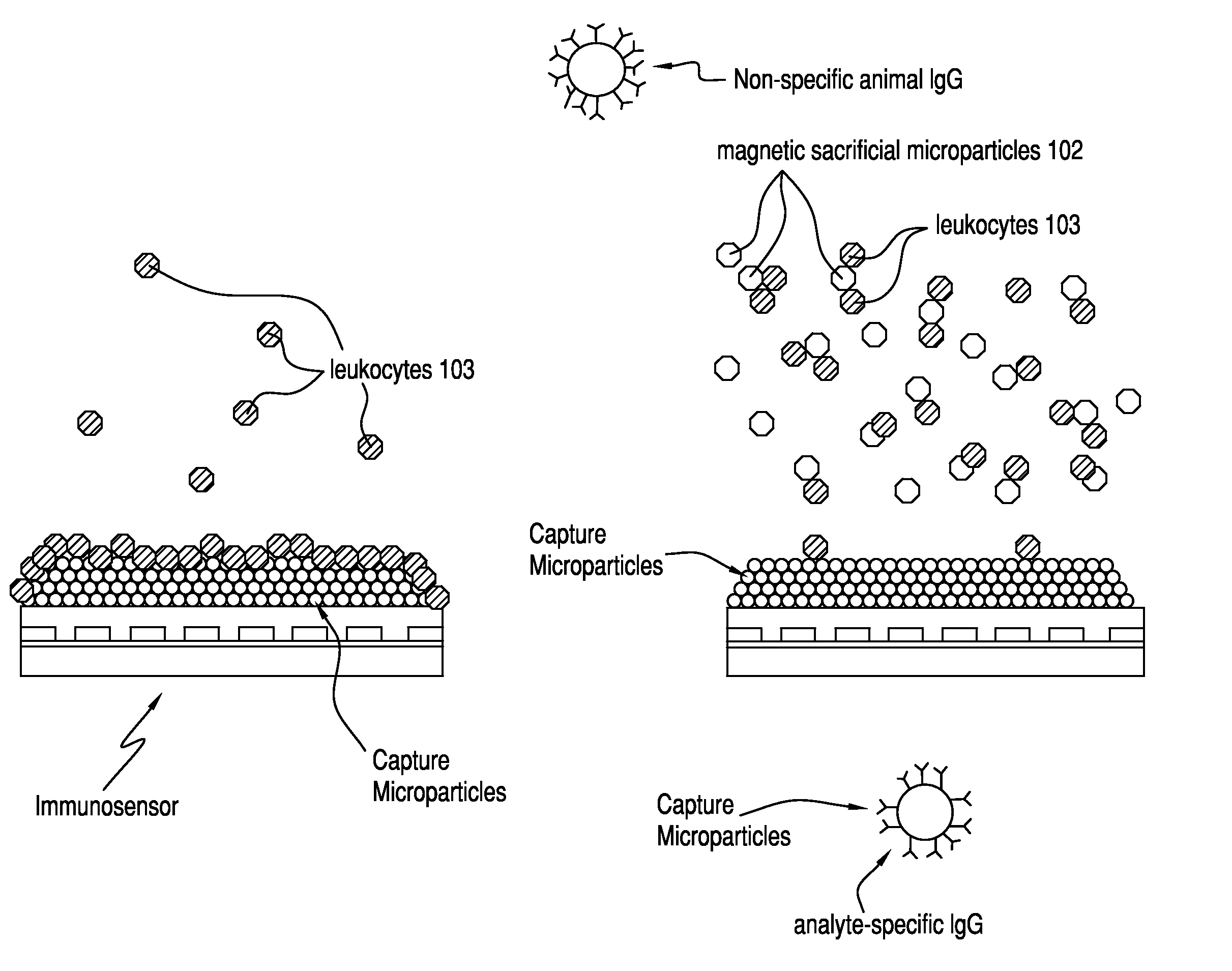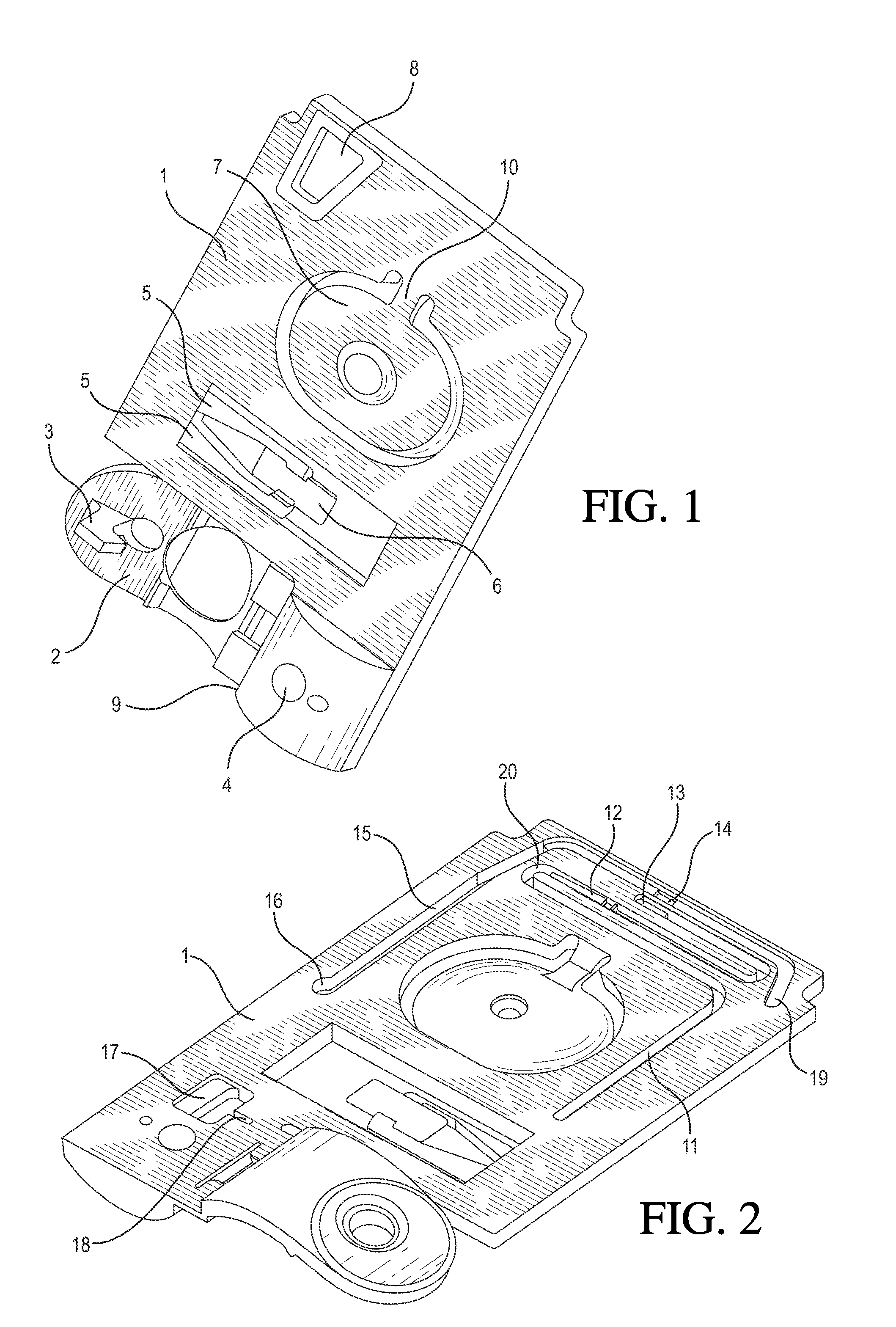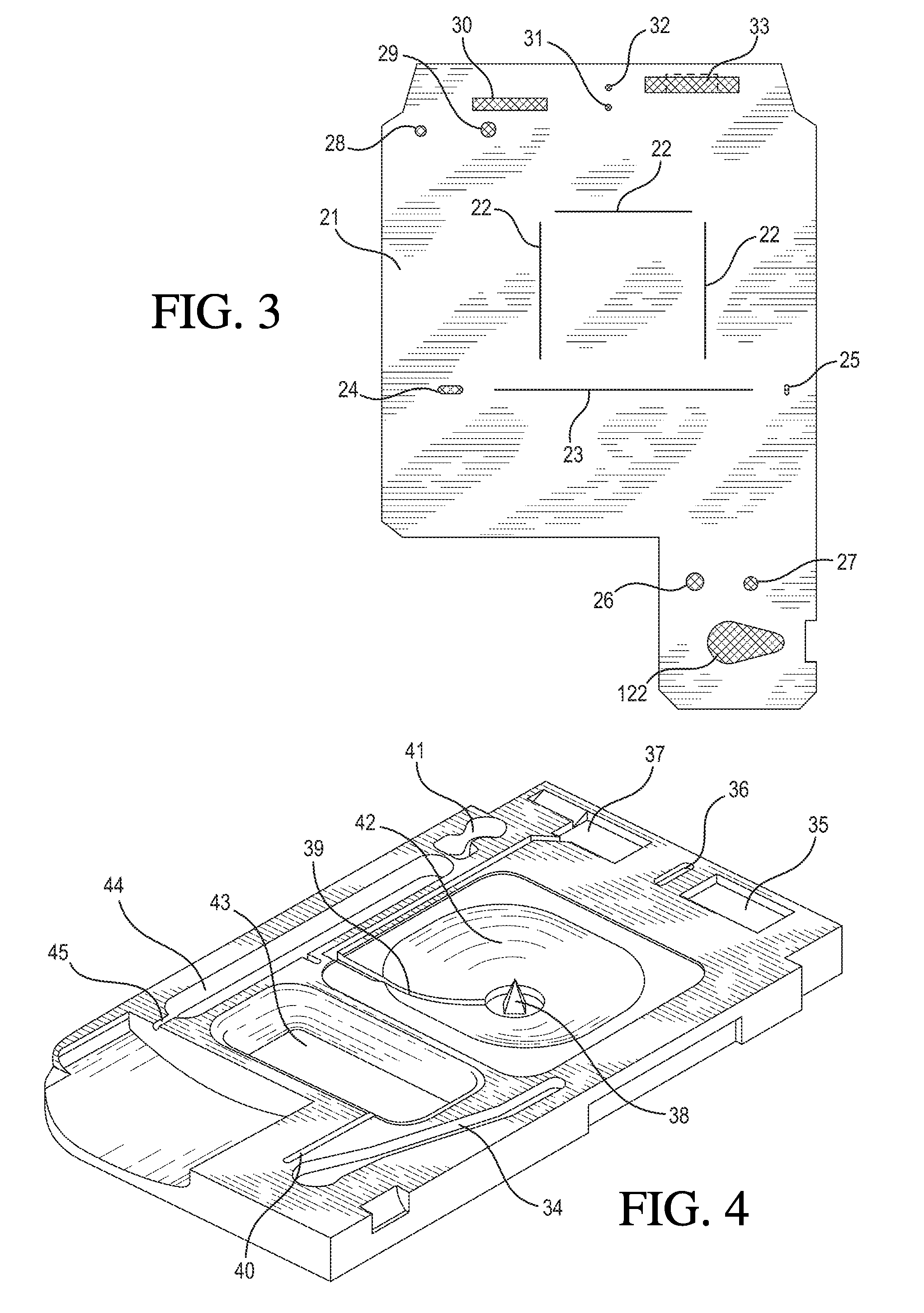Magnetic beads for reducing leukocyte interference in immunoassays
a technology of immunoassays and magnetic beads, which is applied in the field of magnetic beads for reducing leukocyte interference in immunoassays, can solve the problems of immunoassays being susceptible to various forms of interference, laborious testing increases the cost delay, and can be detrimental to the patient's condition or prognosis, so as to reduce or eliminate leukocyte interference
- Summary
- Abstract
- Description
- Claims
- Application Information
AI Technical Summary
Benefits of technology
Problems solved by technology
Method used
Image
Examples
example 1
[0175]In one embodiment, an unmetered fluid sample is introduced into sample holding chamber 34 of a cartridge, through sample entry port 4. Capillary stop 25 prevents passage of the sample into conduit 15 at this stage, and holding chamber 34 is filled with the sample. Lid 2 or element 200 is closed to prevent leakage of the sample from the cartridge. The cartridge is then inserted into a reading apparatus, such as that disclosed in U.S. Pat. No. 5,821,399, which is hereby incorporated by reference. Insertion of the cartridge into a reading apparatus activates the mechanism, which punctures a fluid-containing package located at 42 when the package is pressed against spike 38. Fluid is thereby expelled into the second conduit, arriving in sequence at 39, 20, 12 and 11. The constriction at 12 prevents further movement of fluid because residual hydrostatic pressure is dissipated by the flow of fluid via second conduit portion 11 into the waste chamber 44. In a second step, operation o...
example 2
[0180]Referring now to FIG. 12, there is shown a top view of an immunosensor cartridge. Cartridge 150 comprises a base and a top portion, preferably constructed of a plastic. The two portions are connected by a thin, adhesive gasket or thin pliable film. As in previous embodiments, the assembled cartridge comprises a sample holding chamber 151 into which a sample containing an analyte of interest is introduced via a sample inlet 167. The sample is amended with opsonized magnetic sacrificial beads and a magnet 168 is used to retain the beads loaded with a target material (e.g., leukocytes) from the sample prior to delivery to the sensor chip 153. A metered portion of the sample is delivered to the sensor chip 153, via the sample conduit 154 (first conduit) as before by the combined action of a capillary stop 152, preferably formed by a 0.012 inch (0.3 mm) laser cut hole in the gasket or film that connects the two portions of the cartridge, and an entry point 155 located at a predeter...
PUM
 Login to View More
Login to View More Abstract
Description
Claims
Application Information
 Login to View More
Login to View More - R&D
- Intellectual Property
- Life Sciences
- Materials
- Tech Scout
- Unparalleled Data Quality
- Higher Quality Content
- 60% Fewer Hallucinations
Browse by: Latest US Patents, China's latest patents, Technical Efficacy Thesaurus, Application Domain, Technology Topic, Popular Technical Reports.
© 2025 PatSnap. All rights reserved.Legal|Privacy policy|Modern Slavery Act Transparency Statement|Sitemap|About US| Contact US: help@patsnap.com



